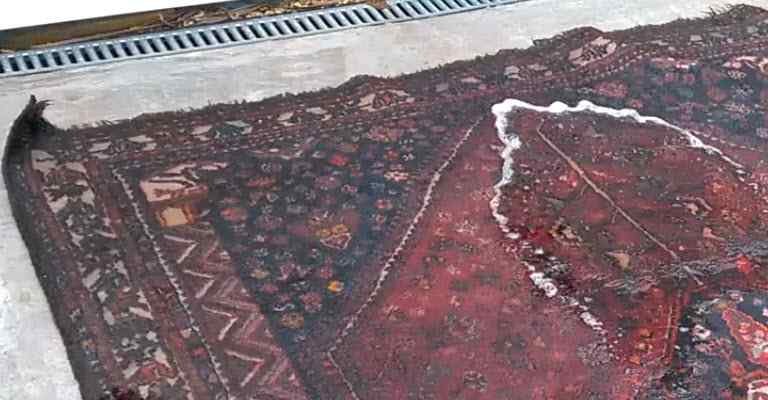Carpet mold is a serious concern that can arise after water damage, whether from floods, leaks, or spills. Learning how to prevent carpet mold after water damage is essential for maintaining a healthy and safe home environment. Mold not only damages your carpet but also poses health risks, such as respiratory issues and allergies. Therefore, it’s crucial to act quickly and effectively to prevent mold growth. In this comprehensive guide, we’ll explore the steps you need to take to prevent carpet mold after water damage.
15 Steps To Prevent Carpet Mold After Water Damage
1. Act Immediately
Time is of the essence when dealing with water damage. The longer water sits on your carpet, the greater the risk of mold growth. As soon as you notice water damage, take immediate action to begin the drying process. Understanding how to prevent carpet mold after water damage starts with prompt action.
2. Remove Excess Water
The first step is to remove as much water as possible. Use a wet/dry vacuum to extract water from the carpet. This tool is effective for pulling out water that has soaked into the carpet fibers. If you don’t have a wet/dry vacuum, you can rent one from a hardware store. Removing excess water is crucial in preventing carpet mold.
3. Pull Up the Carpet
To thoroughly dry the carpet, you may need to pull it up from the floor. This allows you to dry both the carpet and the padding underneath. Lift the carpet carefully to avoid tearing or damaging it. Pulling up the carpet is a key step in preventing carpet mold.
4. Dry the Carpet and Padding
Once the carpet is pulled up, use fans and dehumidifiers to dry the area thoroughly. Position fans to blow air across the surface of the carpet and the padding. Dehumidifiers will help remove moisture from the air, speeding up the drying process. Leave the fans and dehumidifiers running for at least 24 to 48 hours. Thorough drying is essential to prevent carpet mold.
5. Use a Carpet Cleaner
After the carpet is dry, clean it with a carpet cleaner to remove any residual dirt and bacteria. Use a cleaner with anti-microbial properties to help kill any mold spores that may be present. Follow the manufacturer’s instructions for the best results. Cleaning the carpet properly helps in preventing carpet mold.
6. Sanitize the Area
To further prevent mold growth, sanitize the affected area. Use a mixture of water and bleach (one cup of bleach to one gallon of water) to clean the floor where the carpet was. Be sure to wear gloves and ensure proper ventilation while using bleach. Sanitizing is a crucial step in preventing mold.
7. Check for Hidden Moisture
Even if the surface appears dry, there could still be hidden moisture in the carpet or padding. Use a moisture meter to check for any lingering dampness. If moisture is detected, continue the drying process until the carpet and padding are completely dry. Checking for hidden moisture is important for preventing carpet mold.
8. Replace Carpet Padding
In some cases, it might be necessary to replace the carpet padding. Padding is more difficult to dry thoroughly and can retain moisture, making it a breeding ground for mold. Replacing the padding ensures that you remove any hidden moisture and prevent mold growth.
9. Inspect and Clean Furniture
If the water damage affected any furniture, inspect it for moisture as well. Remove any wet furniture from the area and clean it thoroughly. Make sure it is completely dry before placing it back on the carpet to avoid any transfer of moisture. Proper furniture inspection is part of preventing carpet mold.
10. Monitor for Mold
After you have dried and cleaned the carpet, continue to monitor the area for signs of mold. Mold can develop quickly, often within 24 to 48 hours of water damage. Look for any discoloration, musty odors, or other signs of mold. If you notice any signs, take action immediately to address the issue. Monitoring is an ongoing part of preventing carpet mold.
11. Use Mold-Resistant Products
When reinstalling the carpet, consider using mold-resistant products. There are carpets and paddings available that are treated with anti-microbial properties to resist mold growth. These products can provide an additional layer of protection against mold.
12. Maintain Low Humidity Levels
Maintaining low humidity levels in your home is crucial for preventing mold growth. Use dehumidifiers to keep the indoor humidity level below 60%. This is especially important in areas that are prone to moisture, such as basements and bathrooms. Controlling humidity helps prevent mold growth.
13. Improve Ventilation
Good ventilation helps keep the air moving and reduces moisture levels. Open windows and use fans to improve airflow. In areas prone to moisture, consider installing exhaust fans to help remove excess humidity. Improving ventilation is a key strategy for preventing mold.
14. Regular Cleaning and Maintenance
Regular cleaning and maintenance of your carpets can help prevent mold growth. Vacuum your carpets regularly to remove dirt and debris. Schedule professional carpet cleaning at least once a year to keep your carpets in good condition and free of mold.
15. Address Water Leaks Promptly
Preventing water damage is key to avoiding carpet mold. Address any water leaks or plumbing issues promptly. Regularly inspect your home for signs of leaks, such as water stains or dampness. Fixing leaks quickly can prevent water damage to your carpets.
Conclusion
Preventing carpet mold after water damage requires prompt action, thorough drying, and ongoing vigilance. By understanding how to prevent carpet mold after water damage, you can protect your carpets and health. Follow these steps for a mold-free, healthy home environment. Regular maintenance, proper drying techniques, and using mold-resistant products are key. Act quickly, remove excess water, and monitor for any signs of mold. With these strategies, you can effectively prevent carpet mold after water damage and ensure a safe living space.

